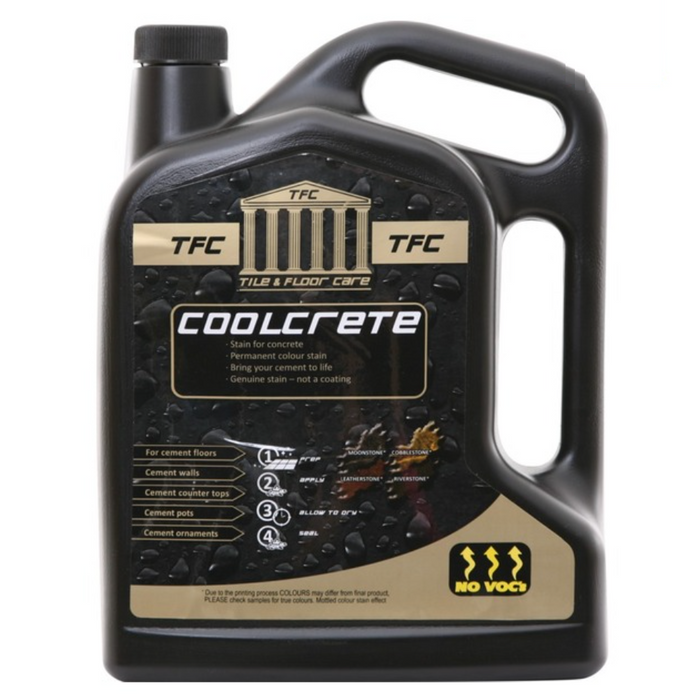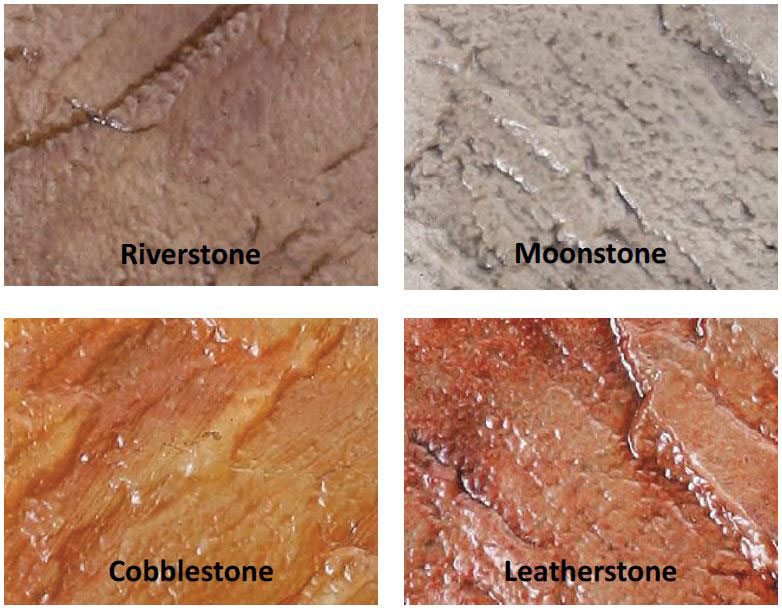
PLEASE NOTE: THIS IS A SPECIAL ORDER ITEM
Product Description
Coolcrete concrete stain can be applied to new or old concrete. The concrete must be unsealed and porous, so that the stain can penetrate and re-act. How it works is that the metallic salts in an acidic water based solution re-act with the calcium hydroxide (free lime) in the hard concrete and yield insoluble permanent colours.
The acid in the Coolcrete solution opens the surface of the concrete and then the water causes the “rusting” re-action. This re-action begins immediately but can continue to develop for up to a month. There are other factors that can determine the outcome of the colour.
- Age of the cement
- Moisture content of the cement
- Type of aggregate in cement – siliceous aggregates such as gravel do not re-act with the stain.
- Floated, power floated or trowelled finish
- Weather conditions during stain application
- Efflorescence
- Preparation method before stain application
Newly laid floors contain more free lime than older established floors so Coolcrete will develop more colour on new cement floors.
Generally cements that are rich in calcium hydroxides will produce richer colours and the same goes for mixtures that contain greater proportions of cement.
Beware of cement additives and accelerators as they can affect the finish and are likely to cause a blotchy effect.
More colour is generated from floated floors that have been lightly trowelled than from floors that have been hard trowelled or power floated. This is because floated floors are less dense and contain more free-lime than dense trowelled and power floated floors.
Cement slabs laid in wet cool conditions develop more colour than those in dry warm conditions due to the fact that the higher and longer water presence causes more rusting. Also the stain penetrates deeper in wet cool conditions. However be aware that if the conditions are too wet, then efflorescence can occur, causing blotches. If the stain is applied to a hot dry surface the development will be limited as the carriers will flash off immediately and thus not allow the stain to penetrate and react.
If the slab is constantly damp then the chemical reaction of the stain’s development will continue and this will lead to the floor turning brown or even black. This stresses the importance that the slab has been correctly installed with the dampcourse layer below it.
Do not clean with acids before application as the acids kill the free-lime and thus limits colour development.
Remove all oils, waxes etc as these will prevent the stain from penetrating and re-acting with the free-lime.
Available in 1L and 5L.

